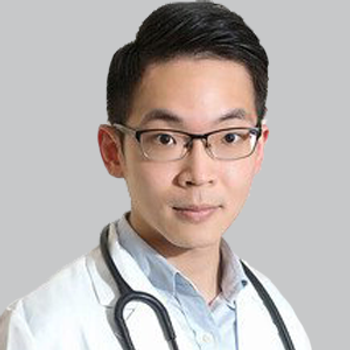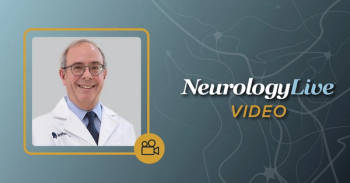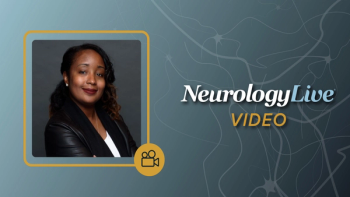
Migraine Advances: Problems Created by Paradigm-Shifting Progress
The director of the MedStar Georgetown Headache Center shared her clinical understanding of new therapies for migraine and how the paradigm shift in care has altered the experience for both patients and physicians.
Since 2018, patients with migraine have seen a number of new therapies win FDA approval, all of which have shown notably efficacy and safety in their clinical development. Migraine specialists have now experienced several years of real-world use, and studies have begun to read out data that match these experiences.
In a conversation with NeurologyLive®, she spoke about some recent data in headache medicine that has provided evidence of the in-clinic experience and how the migraine treatment landscape has shifted almost continuously in the past several years. As well, she touched on what challenges need to be addressed to achieve the goal of educating more physicians on migraine therapies.
NeurologyLive®: What are your thoughts on developing therapies that might be able to reduce the frequency of dosing and number of tablets to avoid patients needing to ration?
Jessica Ailani, MD: There has been so much great work that's been done in our field, really. Folks are trying to pull the focus back on quality of life, because when you do talk to patients, they're not really good at counting—and I don't blame them. It's very hard to count how many migraines you have. It's quite frustrating, and it gets very depressing. But what is important? How many times have I missed work? How many times have I missed out on life? How much control do I have over this disease?
In data that was presented at AAN, and the publications that have followed, there's been a number of them looking at rimegepant and the long-term safety studies and parsing out that data, looking at improved quality of life. Even if the patients are just using the pills a certain number of days per month, looking at if they split the patient population into those who have 2 to 14 migraines per month and then 4 to 14 migraines per month, how they do. Then, looking at if you just use rimegepant 6 days per month, even in that population, you tend to do better and have improved quality of life.
All of this is really pointing out something I think we know very well clinically: when the patients have control of how they're able to use their treatment without the fear of medication overuse headache, and without the fear of their treatment being taken away from them, their quality of life improves because we're giving that locus of control back to the patient. This, I think, is what I find to be very beautiful data. Studies that are really backing up what we're finding in-clinic, and that paradigm shift, the conversation shift. The part that makes it so much more amazing to go to work is when you're like, “Oh my gosh, finally, I can give control back to you, I can tell you take it as you need it.” And now, we're having the data that says don't only believe me but believe the data that's showing that when you take it as you need it, you're going to feel better, and the disease will improve as well. That's something that's unique, probably, to this class. Though, right now, we only have this data for rimegepant. It'll be interesting to see, as more studies are done, if that is a class-wide effect. Then, alluding to some of these newer therapies, to see if maybe they can kind of share that same model.
Obviously, again, patients having to kind of count out tablets and understand how much medication they have versus what they have available to them and what they might need—that's a major challenge. There have been a lot of efforts to kind of supplement those things by getting devices involved and kind of trying to optimize things as best as we can in that way.
Are there any other challenges right now that are making day-to-day care complicated?
I think we have made a lot of progress very quickly, and in a way where things have come so fast in the United States. A couple of things that we have noticed is when things come so quickly, with that pace, it’s been difficult to be able to get all that information across quickly. One thing that patients will say is that they themselves sometimes feel overwhelmed. “So many choices, that's wonderful. But what am I supposed to do? What's the right thing?” Sometimes we find that our own patients have been given them too many things. It's good to have lots of options, and we do try to make plans for them about when to use what option, but there's not really a great way to dispose of things that don't work. This universally becomes an issue. They get these boxes of items that don't work, and then the fear is always then that they go back and use them when they shouldn't—because it's not working, and they really should have tossed that stuff out.
We have patients that have medications and supplements and devices, and then they keep and hold on to things they don't necessarily use. They don't really know how to dispose of them. They're not sure when to pull what out, and I think that when you start to move away from the subspecialist and you go to the just the general neurologist, and then down to the primary care level, this is when things get very confusing for everybody. Some of the big pain points are that we have so many options, and it is getting very difficult to figure out where to put these options—how to pull them out, when to pull them out—and when you get down to primary care, how, in a very, very short amount of time, are they supposed to pull out the best option for the patient? We're trying to educate on that. But it is tough. More comes out and you're given, “Here are 40 minutes, teach only the most up to date info.”
It's a good problem to have, I think, but we're watching the patients really struggle with it, and I wish there was a better way we could come about and make it a little bit simpler. I'm just not really sure. I think many of us aren't really sure how to simplify something that's become complicated. Because the disease itself is complicated. It's not that easy.
Has there been any progress made in helping providers feel more confident in utilizing these therapies?
I would hope so. We definitely have more headache specialists. There used to be 200 or 300 in the United States, but we're up in the 800 range. There has definitely been an uptick in the number of people who are certified headache specialists. They're more headache fellowship programs, they're more people going into headache fellowship, and that's been through the work of organizations like the American Headache Society that does resident education programs and has gracious funding to go and send people out to residency programs that don't have a headache specialist to get headache specialist-type training.
We also have resident education days where we bring residents in to have a full weekend of education. That's really when they get to meet headache experts, and then decide if this is something they want to do. They have the International Headache Academy, where they bring interested residents, fellows, and young clinicians together to talk research and science and then assign mentors to do projects. Then, you have the
Then, you have all these CME programs that are getting funded to do different types of meetings at primary care education levels, to try to bring in primary care to get education. Now, the American Headache Society also has started a whole primary care section of educating out towards grand rounds and other types of meetings, recorded meetings, and different types of pamphlets and things that go out there trying to get to primary care. They’re at those big meetings to get into the community to try to educate.
Newsletter
Keep your finger on the pulse of neurology—subscribe to NeurologyLive for expert interviews, new data, and breakthrough treatment updates.




























